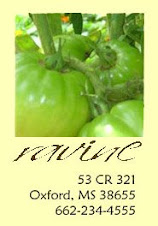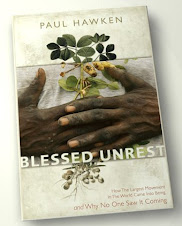 If you have not read Harvest for Hope, from the New York Times bestselling author of Reason for Hope, Jane Goodall, you must do so. The book so clearly and effectively explains much of what is going on in the world of agriculture and human consumption of resources.
If you have not read Harvest for Hope, from the New York Times bestselling author of Reason for Hope, Jane Goodall, you must do so. The book so clearly and effectively explains much of what is going on in the world of agriculture and human consumption of resources.According to Jane Goodall:
Some of the multinational corporations that are taking over the farmland of North American are also buying up seed companies and literally attempting to patent the world's seeds. This is not science fiction. It's happening now. In January of 2005, Monsanto (now dubbed "Lord of the Seeds") took over Seminis, the world's leading seed company. At this rate, a few multinational corporations are close to gaining control of the world's seed supply.

The following article appeared in the New York Times online magazine on October 9, 2008.
Farmer in Chief
By MICHAEL POLLAN
Published: October 9, 2008
It may surprise you to learn that among the issues that will occupy much of your time in the coming years is one you barely mentioned during the campaign: food. Food policy is not something American presidents have had to give much thought to, at least since the Nixon administration — the last time high food prices presented a serious political peril. Since then, federal policies to promote maximum production of the commodity crops (corn, soybeans, wheat and rice) from which most of our supermarket foods are derived have succeeded impressively in keeping prices low and food more or less off the national political agenda. But with a suddenness that has taken us all by surprise, the era of cheap and abundant food appears to be drawing to a close. What this means is that you, like so many other leaders through history, will find yourself confronting the fact — so easy to overlook these past few years — that the health of a nation’s food system is a critical issue of national security. Food is about to demand your attention.
Complicating matters is the fact that the price and abundance of food are not the only problems we face; if they were, you could simply follow Nixon’s example, appoint a latter-day Earl Butz as your secretary of agriculture and instruct him or her to do whatever it takes to boost production. But there are reasons to think that the old approach won’t work this time around; for one thing, it depends on cheap energy that we can no longer count on. For another, expanding production of industrial agriculture today would require you to sacrifice important values on which you did campaign. Which brings me to the deeper reason you will need not simply to address food prices but to make the reform of the entire food system one of the highest priorities of your administration: unless you do, you will not be able to make significant progress on the health care crisis, energy independence or climate change. Unlike food, these are issues you did campaign on — but as you try to address them you will quickly discover that the way we currently grow, process and eat food in America goes to the heart of all three problems and will have to change if we hope to solve them. Let me explain.
After cars, the food system uses more fossil fuel than any other sector of the economy — 19 percent. And while the experts disagree about the exact amount, the way we feed ourselves contributes more greenhouse gases to the atmosphere than anything else we do — as much as 37 percent, according to one study. Whenever farmers clear land for crops and till the soil, large quantities of carbon are released into the air. But the 20th-century industrialization of agriculture has increased the amount of greenhouse gases emitted by the food system by an order of magnitude; chemical fertilizers (made from natural gas), pesticides (made from petroleum), farm machinery, modern food processing and packaging and transportation have together transformed a system that in 1940 produced 2.3 calories of food energy for every calorie of fossil-fuel energy it used into one that now takes 10 calories of fossil-fuel energy to produce a single calorie of modern supermarket food. Put another way, when we eat from the industrial-food system, we are eating oil and spewing greenhouse gases. This state of affairs appears all the more absurd when you recall that every calorie we eat is ultimately the product of photosynthesis — a process based on making food energy from sunshine. There is hope and possibility in that simple fact.

The impact of the American food system on the rest of the world will have implications for your foreign and trade policies as well. In the past several months more than 30 nations have experienced food riots, and so far one government has fallen. Should high grain prices persist and shortages develop, you can expect to see the pendulum shift decisively away from free trade, at least in food. Nations that opened their markets to the global flood of cheap grain (under pressure from previous administrations as well as the World Bank and the I.M.F.) lost so many farmers that they now find their ability to feed their own populations hinges on decisions made in Washington (like your predecessor’s precipitous embrace of biofuels) and on Wall Street. They will now rush to rebuild their own agricultural sectors and then seek to protect them by erecting trade barriers. Expect to hear the phrases “food sovereignty” and “food security” on the lips of every foreign leader you meet. Not only the Doha round, but the whole cause of free trade in agriculture is probably dead, the casualty of a cheap food policy that a scant two years ago seemed like a boon for everyone. It is one of the larger paradoxes of our time that the very same food policies that have contributed to overnutrition in the first world are now contributing to undernutrition in the third. But it turns out that too much food can be nearly as big a problem as too little — a lesson we should keep in mind as we set about designing a new approach to food policy.






























